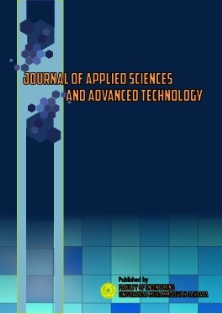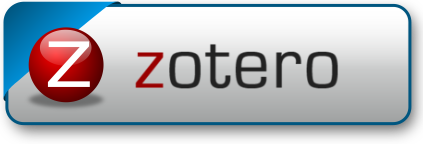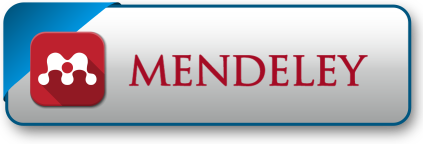Alert Control Model for Exposure of COVID-19 in Industrial Closed Work Space
DOI:
https://doi.org/10.24853/jasat.5.3.105-112Keywords:
Labor, Industry Alert control, Mathematical. Model, COVID 19Abstract
The Covid-19 pandemic has changed the industrial management system, including the regulation of labor. Most of the work in the industry cannot be done through work from home, but must still be in production units. In a number of cases, clusters of COVD 19 were found in the industry, forcing the industry to have to lock down. The problem of the lack of a model for controlling the spread of COVID 19 in the manufacturing industry is the basis for this research. The model designed in this study is also expected to be relevant in the new normal era for the manufacturing industry. The modeling and application of COVID-19 control research in the manufacturing industry is carried out through four stages, namely identification and characterization of work patterns, model design and validation, model implementation and verification, and model comparison testing. At the stage of identification and characterization of work patterns using the methods as guided by the International Labor Organization. The design phase and model validation used the Epidemic Mathematics approach and the Shewhart Control Chart. The application of the model in the industry is in accordance with the guidelines for working in a factory during the COVID-19 Pandemic according to the World Health Organization. The comparative test of the model will be processed using the diversity test. The data used is collected from the company in the form of simple tracing monitoring data for workers before entering the work area and shortly before leaving the work area, COVID 19 test data if any, employee health data, and other data if relevant to support this research. The data obtained is used for model design, both the employee health control model and the COVID-19 distribution model in the work area. The model is made with a scope that is limited only to the industrial work environment, not including outside facilities. Contamination to employees may occur when employees return home or are outside the factory. The model also does not adopt the presence of employees who are being treated for COVID-19 healing in a healing facility. In the Shewhart Control Chart model, it is hoped that a control limit can be obtained that can be used to monitor fluctuations in employee health, the diagram will be designed for daily monitoring of workers. Out-of-control data becomes a warning to carry out a reliability test (Capability) and to trace sources of contamination obtained by employees.Downloads
References
FDA. 2020. Food safety and the coronavirus disease 2019 (COVID-19) | FDA. https://www.fda.gov/food/food-safety-during-emergencies/food-safety-and-coronavirusdisease-2019-covid-19.
Li, X., B. Wang, C. Liu, T. Freiheit and B. I. Epureanu. 2020. Intelligent Manufacturing Systems in COVID 19 Pandemic and Beyond: Framework and Impact Assessment. Chin. J. Mech. Eng. (2020) 33:58. PP 2-5
Renouf, M.A., M. Poggio, A. Collier, N. Price, B.L.Schroeder and P.G. Allshopp. (2018). Customised life cycle assessment tool for sugarcane (CaneLCA)— a development in the evaluation of alternative agricultural practices. Int J Life Cycle Assesst. https://doi.org/10.1007/s11367-018- 1442-z
Mohamadou, Y., A. Halidou, and P. T. Kapen. 2020. A review of mathematical modeling, artificial intelligence and datasets used in the study, prediction and management of COVID-19. Applied Intelligence (2020) 50:3913–3925.
Krishna, M.V. 2020. Mathematical modelling on Diffusion and Control of COVID–19. Infectious Disease Modelling. In press.
Rhofita, E.I. and A. E. Russo. (2019). Efectiveness Performance of Sugar Cane Industry Waste Water Treatment (WWTP) in Kediri and Sidoarjo Regency. Jurnal Teknologi Lingkungan Vol. 20:2, 235-242
Anirudh. 2020. Mathematical modeling and the transmission dynamics in predicting the Covid- 19 - what next in combating the pandemic. Infectious Disease Modelling. In press.
Rizou, M., I.M. Galanakisa, T.M.S. Aldawoudb, and C. M. Galanakis. 2020. Safety of foods, food supply chain and environment within the COVID-19 pandemic. Trends in Food Science & Technology 102 (2020) 393-299.
Gunawan, T. Bantacut, M. Romli and E. Noor. (2019). Life Cycle Assessment of Cane-sugar in Indonesian Sugar Mill: Energy Use and GHG Emissions. IOP Conf. Series: Materials Science and Engineering 536 (2019) 012059 doi:10.1088/1757-899X/536/1/012059. 1-8
Aday, S, dan M.S. Aday. 2020. Impacts of COVID-19 on Food Supply Chain. Published by Oxford University Press on behalf of Zhejiang University Press.
ISO 14045. 2012. Environmental Management – Eco efficiency assessment of product systemsprinciples, requirements, and guidelines. ISO Secretariate, Geneva.
Serhani, M. and H. Labbardi. 2020. Mathematical modeling of COVID-19 spreading with asymptomatic infected and interacting peoples. Research Square pp. 1-16.
Whelan, C. 2021. Wat is the Temperature Range for COVID-19 ? https://www.healthline.com Accessed 12 December 2021
Wu, Y, Liangyu K., Zirui G., Jue L., Min L., and Wannian L. 2022. Incubation Period of COVID-19 Caused by Unique SARS-CoV-2 Strains: A Systematic Review and Meta-analysis. JAMA Network Open, Infectious Diseases. August 22. 1-19
Downloads
Published
Issue
Section
License
COPYRIGHT POLICY
The author(s) of an article published in the Journal of Applied Sciences and Advanced Technology (JASAT) retains ownership of the intellectual property rights in work (s).
PUBLISHING RIGHTS
The author(s) of an article published in the Journal of Applied Sciences and Advanced Technology (JASAT) have unrestricted publication rights. The authors give the Journal of Applied Sciences and Advanced Technology (JASAT) the right to publish the article and designate the Faculty of Engineering Universitas Muhammadiyah Jakarta Publishing as the original publisher of the article.
LICENSING POLICY
JASAT is an open-access journal that follows the Creative Commons Non-Commercial 4.0 International License (CC BY-NC 4.0), which states that:

Under this license, the reusers must give appropriate credit, provide a link to the license, and indicate if changes were made. Users may do so in any reasonable manner, but not in any way that suggests the licensor endorses users or their use.
Please take the time to read the whole license agreement (https://creativecommons.org/licenses/by-nc/4.0/). As long as reusers follow the license conditions, the owner cannot withdraw these freedoms. The following components are included under this license:
 Attribution: Users must provide appropriate attribution, including a link to the license, and indicate whether or not they made any modifications. Users are free to do so reasonably, but not in a manner that indicates the licensee approves of their usage.
Attribution: Users must provide appropriate attribution, including a link to the license, and indicate whether or not they made any modifications. Users are free to do so reasonably, but not in a manner that indicates the licensee approves of their usage.
 NonCommercial: Users may not use the material for commercial purposes.
NonCommercial: Users may not use the material for commercial purposes.












_2.png)


1.png)

2.png)
